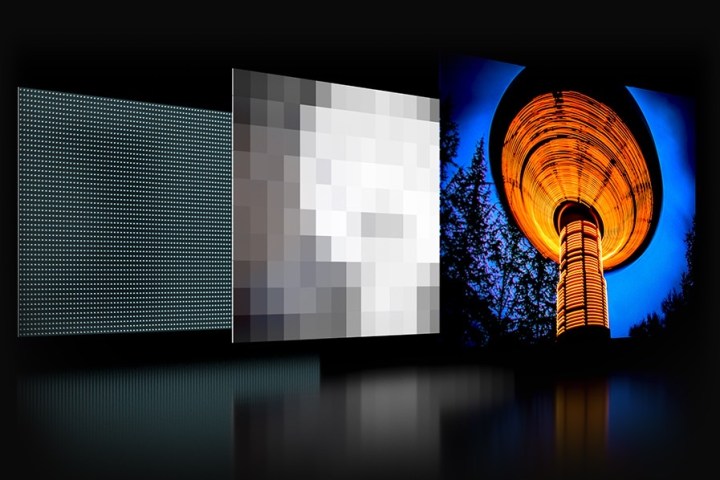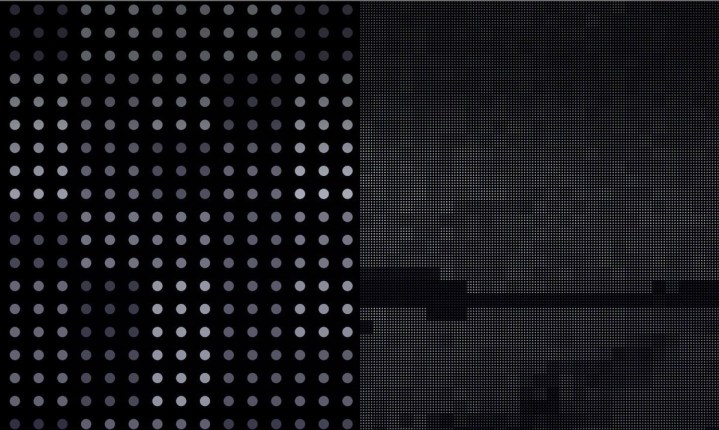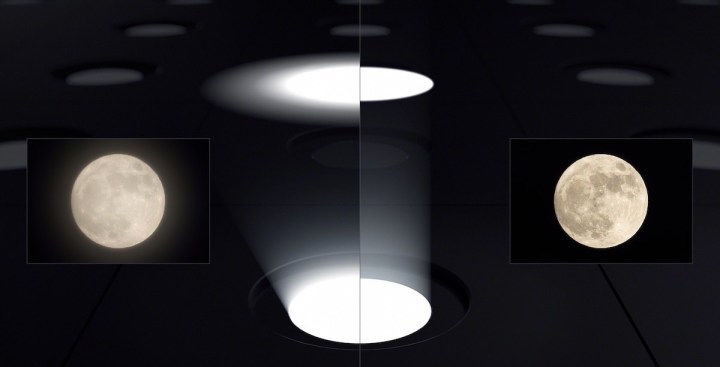
When it comes to televisions, OLED panels have become highly desirable because of their superb picture quality. OLED achieves its picture performance in part due to one key characteristic: It has individually illuminated pixels. When an OLED pixel is turned off, it’s completely black, which gives OLED TVs their much-vaunted “infinite contrast.”
And because the human eye is highly sensitive to contrast, we have a strong preference for how movies and TV shows (and even still photography) look on an OLED TV.
Traditional flat-screen TVs with LCD panels and LED backlights struggle to compete when it comes to contrast. They can certainly (ahem) outshine OLED when it comes to brightness, but they can’t control that brightness at a pixel level like OLED, so it’s impossible for them to achieve OLED’s perfect black.
But just when it seemed that OLED possessed an insurmountable advantage, LED TV makers announced that they had found a technology that had the potential to level the playing field with OLED: mini-LED.
What is a mini-LED TV?

Mini-LED TVs are essentially the same as standard LED TVs, except that where LED TVs sometimes use up to a few hundred individual LEDs in their backlights, mini-LED TVs use thousands of much smaller LEDs in the same space.
Do mini-LEDs use quantum dots?
Generally speaking, yes. To date, we have never seen a mini-LED TV that wasn’t a quantum-dot TV (QLED TV). However, this isn’t a hard and fast rule. There’s no reason why a non-quantum dot TV couldn’t use mini-LEDs in its backlight, but since mini-LEDs are still relatively new and are typically being used on mid-to-high-end models, quantum dots can be considered an expected feature of mini-LED TVs.
Why the size (and quantity) of LEDs matters

For LED TVs, picture brightness is controlled by a backlight. The backlight is made up of individual LEDs. In lower-cost LED TVs, every LED in the backlight is controlled together — they all get brighter or dimmer simultaneously. The trouble is, most on-screen images are made up of bright and dark regions, so if you want a bright region to be really bright, and your backlight essentially behaves as a single LED, you need to use the LCD panel to block the light in the dark parts of the image. This yields blacks that are often no darker than grey.
However, more advanced LED TVs group their individual LEDs into zones, and each zone can then be dimmed independently. If you’ve ever seen the term full-array local dimming (or FALD), that’s what it’s referring to.
FALD backlight zones can be synchronized with bright and dark regions of the picture. This drastically reduces the TV’s reliance on its LCD panel to block light — instead, it simply dims the appropriate zone.
With regular-sized LEDs, there’s a practical limit to how many zones you can have, especially on smaller screen sizes where the ratio of screen size to LED size forces companies to use fewer LEDs. Mini-LEDs — even if they produce the same level of brightness as regular LEDs — are far smaller. More of them can be packed into the same space, which opens up the potential for more zones and more even light distribution within a zone.
Why mini-LED could mean a big boost for picture quality

In a perfect world, mini-LEDs would shrink to the size of a pixel, and each of these mini-LEDs would be treated as its own zone, getting brighter and dimmer independently of its neighbors, with no light bleed from one mini-LED into its neighbor’s space. Such a system would effectively match OLED’s contrast perfectly (or at least compete far more closely), while also providing greater brightness and eliminating the risk of burn-in. That’s pretty much what a MicroLED TV does, but that technology is still prohibitively expensive.
However, LED TVs don’t need to achieve pixel-level brightness control in order to produce an image that — to most humans — can rival OLED. We don’t have an exact ratio, but a mini-LED TV with a backlight divided into thousands of zones would likely have enough flexibility over regional screen brightness to create a very convincing alternative to OLED.
Why not all mini-LED TVs will deliver better picture quality

If mini-LED TVs address the contrast issue so effectively, should we assume a mini-LED TV will be just as good as OLED? No.
Mini-LEDs are potentially able to help LED TVs overcome one of the biggest obstacles (managing brightness and contrast at a granular level) to rivaling OLED, but a lot of other things have to be done right in order to realize this potential.
Mini-LEDs on their own don’t offer much of an improvement over regular LEDs if there aren’t a sufficient number of them. Regardless of the number of individual mini-LEDs, if they haven’t been subdivided into enough zones, the TV won’t be able to take advantage of them.
Finally, and this is arguably the most important part, the TV needs processing power and top-notch algorithms in order to control those zones with speed and accuracy. Five hundred zones won’t help with picture quality if the TV is struggling to synchronize them with fast-moving imagery.
Much like a Formula 1 team will only succeed if the engine, the suspension, the driver, and their pit crew are all working in perfect harmony, a mini-LED TV can only succeed if its components are arranged and controlled correctly.
Who makes mini-LED TVs?

Most major TV brands now make mini-LED TVs, though some companies choose to use their own name for the technology. TCL, one of the first companies to use mini-LED backlights, calls it out, sometimes right in the TV’s model name, a practice that Sony has started to do too. Samsung calls its mini-LED models “Neo QLED,” while LG prefers the “QNED” moniker — though that one is a bit tricky as not every LG QNED TV uses mini-LEDs. Hisense has been the most aggressive adopter of mini-LED technology — all of its current ULED 4K models are now mini-LED equipped.
Are mini-LED TVs expensive?
No, in fact, some mini-LED TVs are priced on par with standard QLED TVs. The entry-level 65-inch Hisense U6, for instance, is regularly $800 and can often be found discounted to a much lower price.
That said, mini-LED TVs can be just as expensive as (or more than) their OLED counterparts. Samsung’s mini-LED-powered 65-inch 4K QN90C costs $2,800 — while its OLED-powered 65-inch 4K S90C is $2,600.
Should I buy a mini-LED TV?
Yes, but you shouldn’t buy one just because it uses mini-LEDs. As we discussed above, a mini-LED is just a very small LED light. Having a backlight made of mini-LEDs is just the starting point. In some cases, a mini-LED TV may not offer any advantages at all over a regular LED TV, and you may end up spending more than you need to.
As always, our advice is to do your homework. Read in-depth TV reviews before you buy and take careful note when the reviewer discusses those critical areas around brightness and contrast — if those aren’t noteworthy, it could be an indication that the manufacturer has failed to take full advantage of its mini-LED potential.
Editors’ Recommendations
Credit: Source link


Comments are closed.